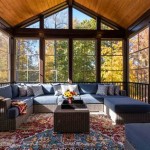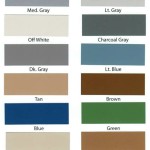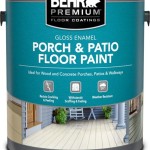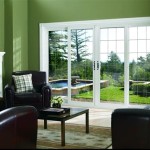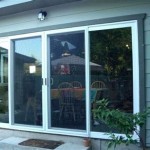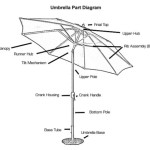Selecting the Right Fabric For Patio Furniture Cushions
Choosing the appropriate fabric for patio furniture cushions is a crucial decision that significantly impacts the longevity, comfort, and overall aesthetic appeal of outdoor living spaces. Outdoor fabrics are subjected to a range of environmental stressors, including prolonged sun exposure, precipitation, temperature fluctuations, and potential contact with mildew, insects, and everyday dirt and grime. Therefore, selecting a fabric specifically engineered to withstand these challenges is essential for ensuring the cushions maintain their appearance and functionality over time. This article will explore the key considerations involved in selecting the right fabric for patio furniture cushions, focusing on durability, performance, and aesthetic considerations.
Understanding Key Fabric Properties for Outdoor Use
The selection process should begin with a thorough understanding of the key properties that contribute to a fabric's suitability for outdoor applications. These properties include resistance to fading, water resistance or repellency, mildew resistance, abrasion resistance, and overall durability. Each of these characteristics plays a critical role in determining how well the fabric will perform under outdoor conditions and how long it will maintain its integrity. Understanding these properties allows for a more informed decision-making process and helps to ensure that the chosen fabric meets the specific needs of the patio furniture and the environmental conditions to which it will be exposed.
Fade Resistance: Prolonged exposure to ultraviolet (UV) radiation from the sun can cause significant fading and degradation of many fabrics. This is particularly true for fabrics made from natural fibers or those that have not been treated with UV inhibitors. The degree of fade resistance is often indicated by a fabric's UV protection factor (UPF) rating, with higher ratings indicating greater protection. Acrylic fabrics and solution-dyed fabrics are generally considered to be the most fade-resistant options for outdoor use, as the color pigments are embedded directly into the fiber during the manufacturing process, making them less susceptible to fading. Polyester fabrics, while generally durable, may require special UV treatments to enhance their fade resistance. Natural fibers like cotton and linen are highly susceptible to fading and are generally not recommended for outdoor cushions unless treated with specialized coatings or used in shaded areas.
Water Resistance and Repellency: Patio furniture cushions are inevitably exposed to moisture, whether from rain, sprinklers, or spills. The ability of a fabric to resist or repel water is therefore a critical consideration. Water-resistant fabrics prevent water from easily penetrating the material, while water-repellent fabrics go a step further by causing water to bead up and roll off the surface. Fabrics treated with durable water repellents (DWR) are commonly used for outdoor cushions to provide this added layer of protection. However, it's important to note that DWR treatments can wear off over time and may need to be reapplied periodically. Fabrics like acrylic and polyester inherently offer a degree of water resistance, while tightly woven fabrics generally perform better than loosely woven ones in terms of water repellency.
Mildew Resistance: The warm, humid conditions that often characterize outdoor environments can promote the growth of mildew on fabrics, leading to unsightly stains and unpleasant odors. Mildew-resistant fabrics are treated with antimicrobial agents that inhibit the growth of these microorganisms. Acrylic and polyester fabrics are naturally more resistant to mildew than natural fibers like cotton, which are highly susceptible to mildew growth. When selecting a fabric for patio furniture cushions, it is advisable to choose those that are specifically labeled as mildew-resistant or treated with antimicrobial finishes to minimize the risk of mildew problems.
Abrasion Resistance: Patio furniture cushions are subjected to considerable wear and tear from regular use, including rubbing, scratching, and friction. The abrasion resistance of a fabric refers to its ability to withstand these forces without showing signs of damage, such as pilling, tearing, or thinning. Fabrics with a high abrasion resistance rating are more durable and will maintain their appearance for a longer period of time. The Martindale test is a common method for evaluating the abrasion resistance of fabrics, with higher Martindale ratings indicating greater durability. For patio furniture cushions that will be subjected to heavy use, it is recommended to choose fabrics with a high abrasion resistance rating.
Overall Durability: The overall durability of a fabric encompasses its resistance to a range of environmental factors and physical stresses. This includes resistance to tearing, stretching, shrinking, and general wear and tear. The construction of the fabric, the type of fibers used, and the quality of the manufacturing process all contribute to its overall durability. Fabrics that are tightly woven, made from high-quality fibers, and treated with protective finishes are generally more durable than those that are loosely woven, made from lower-quality fibers, or lacking protective treatments. When selecting a fabric for patio furniture cushions, it is important to consider the overall durability of the material to ensure that it will withstand the rigors of outdoor use and provide years of reliable performance.
Exploring Common Fabric Types for Patio Furniture Cushions
Once the key properties of outdoor fabrics are understood, it is important to explore the different types of fabrics commonly used for patio furniture cushions and their respective strengths and weaknesses. The most popular options include acrylic, polyester, olefin, and blends of these synthetic fibers. Each of these fabrics offers a unique combination of durability, performance, and aesthetic characteristics, making them suitable for different needs and preferences.
Acrylic Fabrics: Acrylic fabrics, particularly solution-dyed acrylics like Sunbrella, are widely considered to be the gold standard for outdoor furniture cushions. They offer exceptional fade resistance, water resistance, mildew resistance, and abrasion resistance. Solution-dyed acrylics are unique because the color pigments are added to the fiber during the manufacturing process, resulting in a color that is deeply embedded and highly resistant to fading, even after prolonged exposure to sunlight. Acrylic fabrics are also soft, comfortable, and easy to clean, making them a popular choice for high-end patio furniture. However, acrylic fabrics are generally more expensive than other options.
Polyester Fabrics: Polyester fabrics are a more affordable alternative to acrylic fabrics, offering a good balance of durability, performance, and cost. Polyester fabrics are inherently water-resistant and resistant to stretching and shrinking. However, they are generally less fade-resistant than acrylic fabrics and may require special UV treatments to enhance their resistance to fading. Polyester fabrics are also susceptible to pilling and may not be as soft or comfortable as acrylic fabrics. Recycled polyester fabrics are also an increasingly popular option, offering a more sustainable choice for eco-conscious consumers.
Olefin Fabrics: Olefin fabrics are another synthetic option that is gaining popularity for outdoor furniture cushions. Olefin fabrics are lightweight, strong, and resistant to fading, staining, and mildew. They are also relatively inexpensive compared to acrylic fabrics. However, olefin fabrics are not as soft or comfortable as acrylic or polyester fabrics and may be more prone to abrasion. Olefin fabrics are a good choice for budget-conscious consumers who are looking for a durable and low-maintenance option.
Blended Fabrics: Blended fabrics, which combine two or more different types of fibers, can offer a unique combination of properties that may not be available in single-fiber fabrics. For example, a blend of polyester and acrylic can provide a good balance of durability, fade resistance, and affordability. Blended fabrics allow manufacturers to tailor the performance characteristics of the fabric to meet specific needs and preferences. When selecting a blended fabric, it is important to consider the properties of each fiber in the blend and how they will interact to affect the overall performance of the fabric.
Considering Aesthetic and Design Preferences
While durability and performance are paramount considerations when selecting a fabric for patio furniture cushions, aesthetic and design preferences also play a significant role in the decision-making process. The fabric should complement the overall style of the outdoor space and reflect the homeowner's personal taste. Factors to consider include color, pattern, texture, and the overall look and feel of the fabric.
Color Selection: The color of the fabric can significantly impact the overall ambiance of the outdoor space. Lighter colors can create a bright and airy feel, while darker colors can add a touch of sophistication and drama. When choosing a color, it is important to consider the surrounding environment and the existing color scheme of the patio or deck. It is also important to keep in mind that lighter colors are more prone to showing dirt and stains than darker colors. Darker colors may absorb more heat from the sun, potentially making the cushions uncomfortable to sit on in direct sunlight. Neutrals like beige, gray, and white are versatile choices that can easily complement a variety of styles and colors.
Pattern Selection: The pattern of the fabric can add visual interest and personality to the patio furniture cushions. Patterns can range from simple stripes and geometrics to more elaborate florals and tropical prints. When choosing a pattern, it is important to consider the scale of the pattern and how it will relate to the size of the cushions and the overall space. Larger patterns can be overwhelming in smaller spaces, while smaller patterns may get lost on larger cushions. It is also important to consider the style of the pattern and how it will complement the overall aesthetic of the outdoor space. For a more traditional look, classic patterns like stripes and florals may be appropriate, while for a more modern look, geometric patterns or abstract designs may be a better choice.
Texture Selection: The texture of the fabric can add another layer of visual and tactile interest to the patio furniture cushions. Textured fabrics can range from smooth and sleek to rough and nubby. When choosing a texture, it is important to consider the overall feel of the fabric and how it will feel against the skin. Smooth fabrics can be cool and comfortable in hot weather, while textured fabrics can provide a more luxurious and inviting feel. The texture of the fabric can also affect its durability and resistance to wear and tear. Tightly woven fabrics with a smooth texture are generally more durable than loosely woven fabrics with a rough texture.
Overall Look and Feel: Ultimately, the best fabric for patio furniture cushions is one that combines durability, performance, and aesthetic appeal. The fabric should be able to withstand the rigors of outdoor use while also complementing the overall style of the outdoor space and reflecting the homeowner's personal taste. By carefully considering these factors, it is possible to choose a fabric that will provide years of enjoyment and enhance the beauty and comfort of the outdoor living space.

What Is The Best Fabric For Outdoor Cushions

Best Fabric For Outdoor Furniture And Cushions

Cover Fabric For Your Outdoor Foam Cushions The Factorythe Factory

Qualities To Look For In Fabric Outdoor Cushions Osier Belle

Outdoor Upholstery Fabrics Sunbrella

How To Choose The Best Outdoor Cushion Fabric

Custom Bench Cushions Pallet Set Water Resistant Fabric For Furniture Outdoor Seat Etsy Hong Kong

Fabric Selection Patio Furniture Cushions

Choosing The Perfect Fabric For Your Outdoor Furniture Cushions Lehrers Fireplace And Patio

Fabric Paint On Patio Cushions Rust Oleum
See Also

